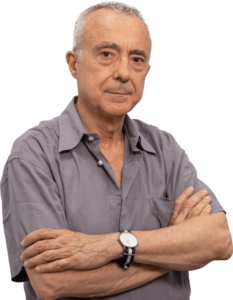← (ita / fr) →

Corpus-et-Vulnus is a broadly “performative” project, complex by nature, due to its composition of manifold pathways, at times intertwining. The paths include the exhibited works, the author’s accompanying reflections, references to the past and present – Tàpies, Kiefer, Parmiggiani – and not least, the exhibition space where everything happens and regenerates through those who move through the space.
But it is also complex because it is aware of the functional limits that works have as symbolic language in relation to the fluidity of the processes that affect and involve us.
Bodies, as Jean-Luc Nancy wrote in Corpus, “are always on the verge of departing, in the imminence of a movement, a fall, a distancing…”
They are not forms to be fixed as stable architectures, or in the sense of classical physics, consistent particles, but rather states of potential and relative movement. In other words, bodies inhabit, and places are affected by their inhabitants.
The “dispositif,” a term that often appears in Sergio Mario Illuminato’s reflections, is a mechanism made up of several interconnected parts, not so much in a mechanistic and therefore formal sense, as a result of compositions and measures, but rather as parts that hybridise for continuity.
The complex organism of the dispositif is therefore the basis of a feeling that filters through the various elements: works and place.
Everything is closely connected, so much so that the thought (perhaps one should say the spirit) that circulates among the various media (paintings, text, place) is the true device without a definite form, just as the life that is the raw material of “corpus” and “vulnus” has no definite form.
From this relationship arises the idea of an exhibition path as well as the path of thought that precedes and inhabits it.
“That ‘a good painter is inwardly full of figures’” was a reflection of Albrecht Dürer, taken up by Salvatore Settis as an epigraph for his text in the catalog for Anselm Kiefer’s exhibition at Palazzo Ducale in Venice in 2022.
Kiefer also claimed to think in images, aided by poetry.
Trying to thin out the clouds inherent to metaphors, bringing together different media, is typical of the post-media nature of contemporary feeling, even when it comes to painting-painting, as in the case of Corpus-et-Vulnus.
However, it is a painting that needs to be nourished beyond the frame of composition, inhabiting a strong, site-sensitive place, such as the former Carcere di Castello in Velletri, to “place at the centre the most fragile condition of human reality,” writes the author; giving shape to a matrix of processes, such as Nancy’s, to engage, finally, in a regenerating dialogue that begins at the exhibition moment.
For this reason, one can also speak of a “performative” sensitivity beyond the too narrow grammar of languages, because works can also function as performers in a field of relations activated by them.
We have been accustomed to internalising painting as an unfathomable and self-sufficient sacred reality to be viewed from afar, as if it were an island that cannot be alighted.
Meanwhile, “to see painting is to touch, to see the artist’s gestures,” says William J.T. Mitchell in his Pictorial Turn – which is why, he deduces, it is so rigorously forbidden to touch the canvases.
Working on exposure, instead, as if it were a biographical narrative that reveals the author’s position in a problematic field of relationships, is a way of unveiling the work by making the process and therefore the vitality, felt.
“Visual media do not exist,” Mitchell argued, contending that there are no “pure” media, since our senses cannot act autonomously, as we are inside a body-organism.
Corpus-et-Vulnus form a sentient and communicative organism whose signs are certainly not abstract illustrations of concepts but concept-matrices themselves, as constituent parts of a living and proliferating organism.
Prof. Franco Speroni, writer, historian, and art critic, professor of contemporary art history and art criticism methodology at the Academy of Fine Arts in Rome
← (ita / fr) →
